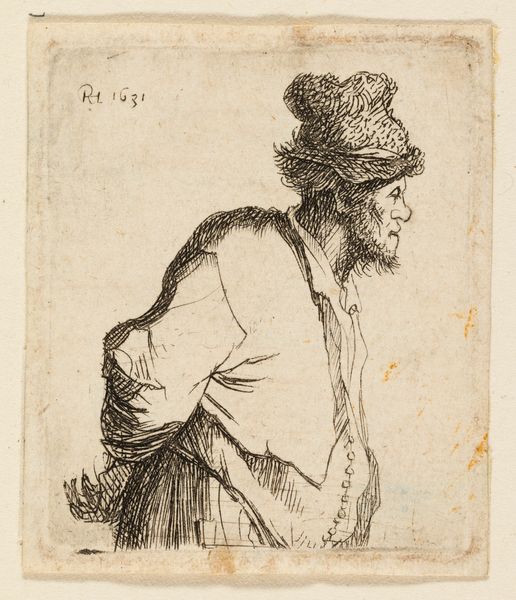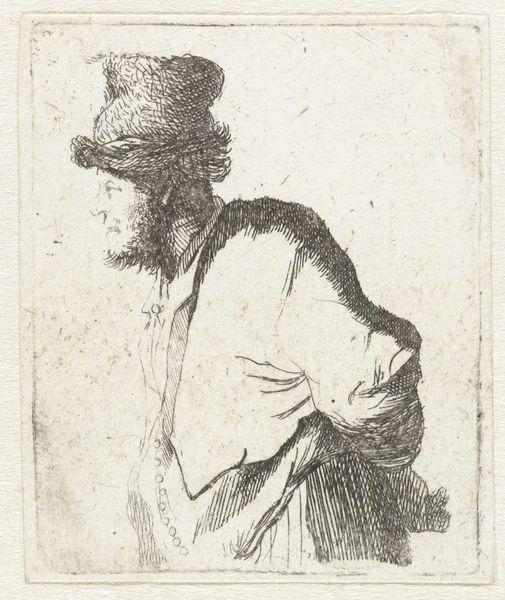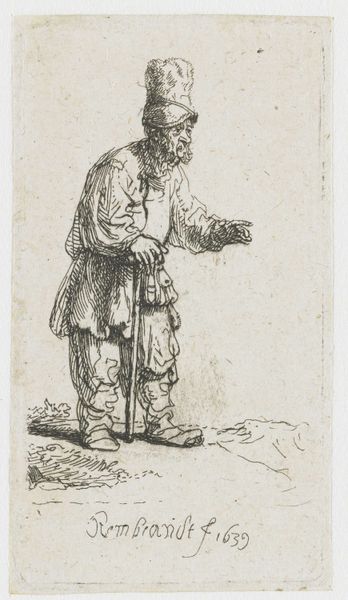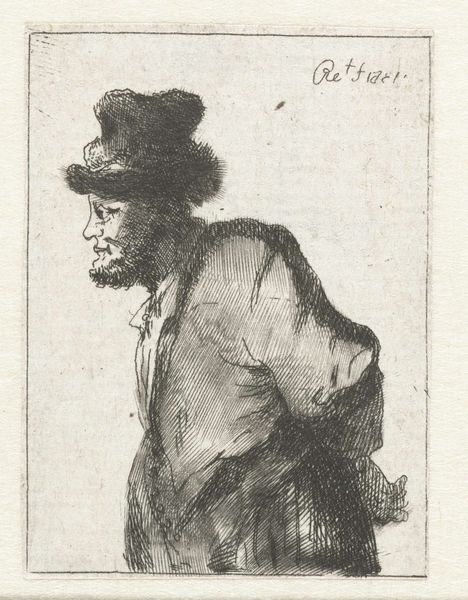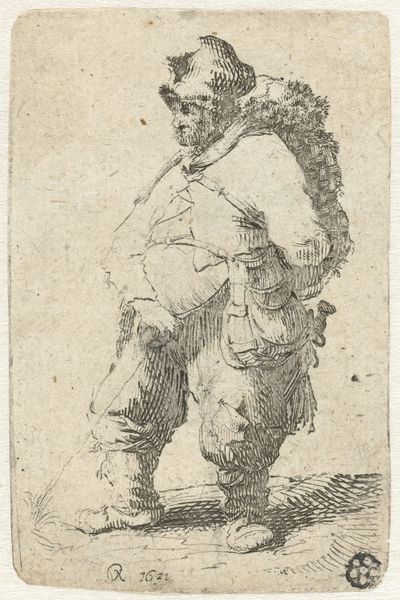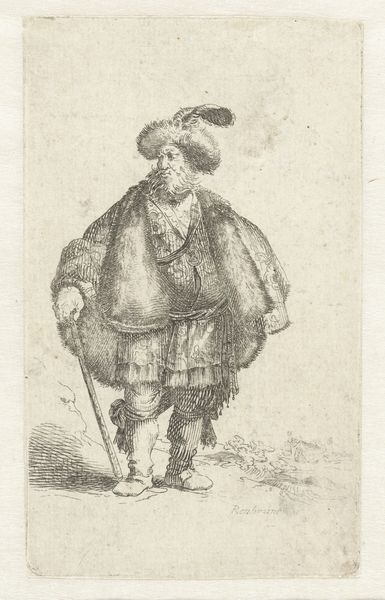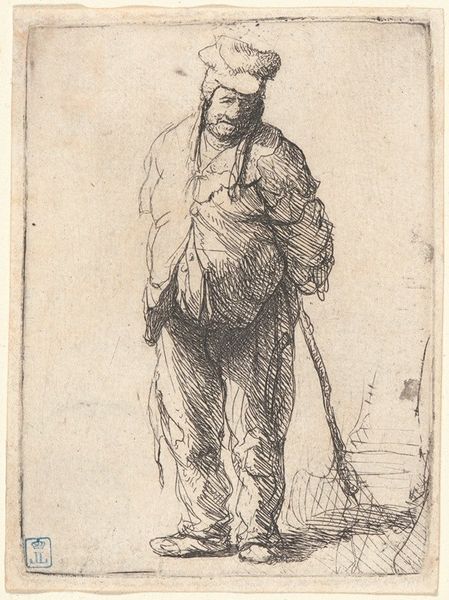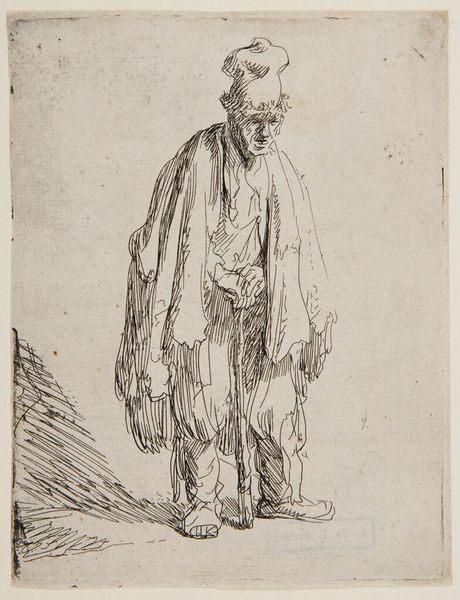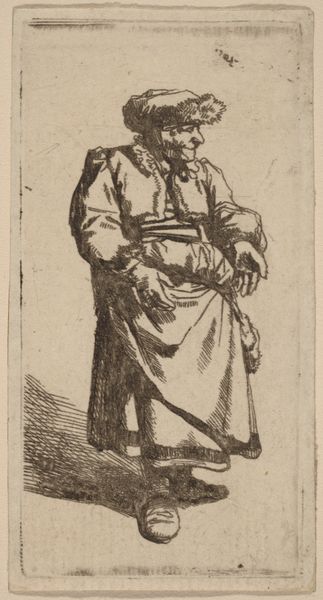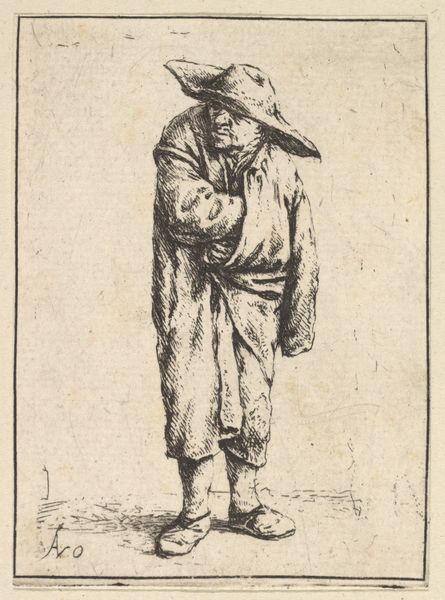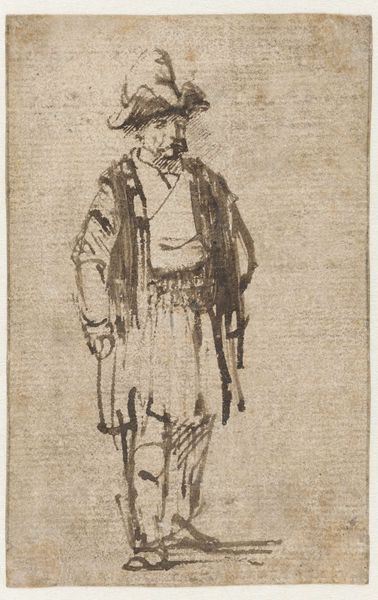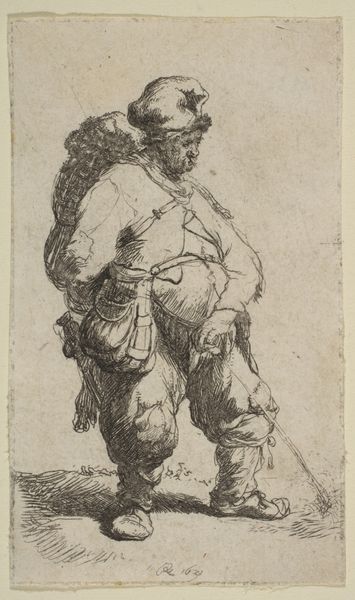
print, etching
#
portrait
#
baroque
# print
#
etching
#
figuration
Dimensions: height 59 mm, width 50 mm
Copyright: Rijks Museum: Open Domain
Curator: Here we have Rembrandt van Rijn’s 1629 etching, "Peasant with his Hands behind his Back," currently held at the Rijksmuseum. Editor: My initial impression is one of stark simplicity. The man’s pose and expression feel incredibly contained, almost resigned. The tight hatching amplifies this constrained mood. Curator: Indeed. Notice how Rembrandt achieves such a range of textures and values within the limitations of etching. The density of the lines describes the rough fabric of the peasant's clothing, and the light catches his face to highlight its deeply lined features. It's an early work, yet his command of chiaroscuro is already developing. Editor: Absolutely, and that makes me think about the materials themselves. Copper, acid, paper... the starkness stems directly from the resistance and collaboration of those elements. Rembrandt didn’t just draw; he wrestled with the physical world to produce this image. How does that laborious process align or contrast with the socio-economic realities facing this anonymous peasant? Curator: That’s a fascinating point. Consider the figure’s downcast gaze, coupled with his concealed hands. It suggests powerlessness, perhaps even subjugation. The etching medium, traditionally associated with reproduction and accessibility, allows Rembrandt to disseminate this image of a marginalized figure. Editor: Precisely! And it’s a critical reminder that artistic decisions about material and production are inextricably linked to the broader social context. Was this piece intended to evoke empathy, or simply to document? The labor of producing art reflecting labor within society raises critical questions. Curator: Perhaps both. There’s an undeniable dignity in Rembrandt's portrayal, a humanity that transcends social status. It’s a powerful statement achieved through subtle modulation of light and shadow. Editor: Thinking about materiality, the stark linearity reinforces a feeling of raw, unadorned reality. No embellishments, no romanticizing the subject—the etching resists such fantasies. Curator: Indeed, a close viewing invites deeper questions about class, representation, and the very nature of seeing. Editor: Ultimately, this artwork offers a poignant glimpse into both a specific time and timeless themes, forcing us to reconsider the labor embedded in art and the people it depicts.
Comments
rijksmuseum about 2 years ago
⋮
Rembrandt’s rapid progress as a printmaker is easy to see in this group of poor wretches. The seated woman is still somewhat crudely executed, but the beggar woman with a gourd and her male companion already testify to greater mastery of the technique. The little prints of a man and a woman are etched in the finer style that Rembrandt was to develop later.
Join the conversation
Join millions of artists and users on Artera today and experience the ultimate creative platform.
